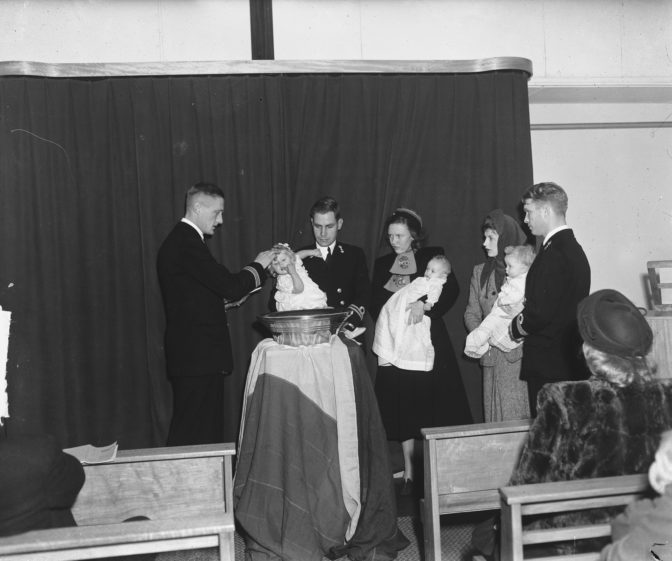A peter is a godfather, meter is a godmother. The terms are typically used in Catholic sources. The word compeer is also sometimes used, especially in older records.
In Dutch Reformed sources, the term doopgetuige (baptismal witness), or getuige (witness) is used more often.

Baptism in 1948. Credits: Ben Merk, collection Nationaal Archief (public domain)


In Belgium, often one of the grandfathers was “peter” and was often announced as “pitje”.
Reading about the distinction between the Catholic and Protestant terms makes me wonder about something. While there is no real bright line between where Catholics and Protestants might live, and that there are pockets of each within larger enclaves of the other, would people have moved from one part of the country to another simply so that they could be more a part of a majority of their religion? In the 18th and 19th centuries would Catholics from a largely Protestant area move to a place with more Catholics, and vice versa? Or was living amongst people of your own religion of less importance in driving migration?
I have not found many people who migrated to other parts of the Netherlands because of religion. The only exception are government employees, who sometimes moved to Roman Catholic areas where only Dutch Reformed could have public positions like being mayor, aldermen, or school teachers. For the rest, economics was the main driver of internal migration, not religion.
Thank you!
Hi…It took me a long time to finally find reference to the meaning of the terms “meter” and “peter”. While I assumed they referred to godparents, they not found in the Latin or Dutch genealogical vocabulary lists I have seen. Could I suggest that the terms be added to your Latin vocabulary list? I am guessing, since they are not actually the Latin words for godparents, they must be a kind of short form or vernacular usage in Dutch Catholic churches.
Glad you found my article useful. Peter and meter are Dutch words used in Catholic churches, so they don’t belong in my Latin word list.
In the Reformed Dutch Church of Acquanonck Passaic (city) Passaic (county) New Jersey the baptismal records column headings are Vader/Moeder/Compeer/Peet/Kind/Gedoopt
apparently father/mother/ godfather/godmother/child/date of baptism 1777-1800.
[original register on Ancesry.com “Reformed Dutch Church records in selected states.
Thanks, for the clarification.
Catholic practice seems to permit grandparents to be godparents/getuigen. Any thoughts on whether this was common? I have several examples where this seems to be the case.
And – was it normal for the two witnesses to be man and wife?
And – there seems to be a common practice for the actual witness to be there on behalf of someone else.